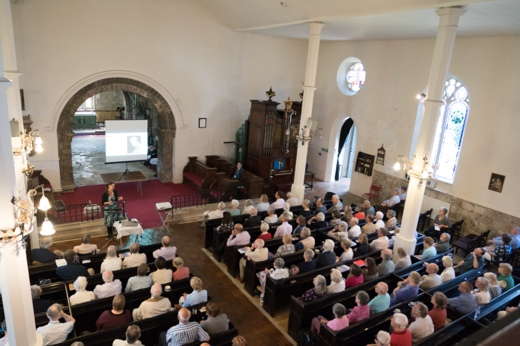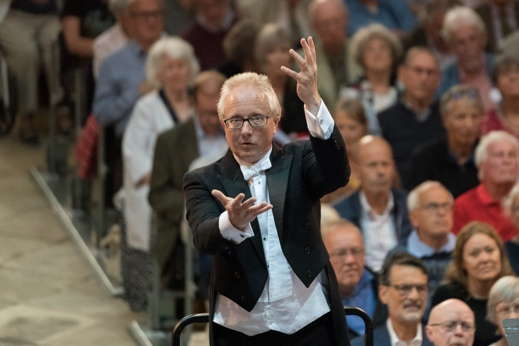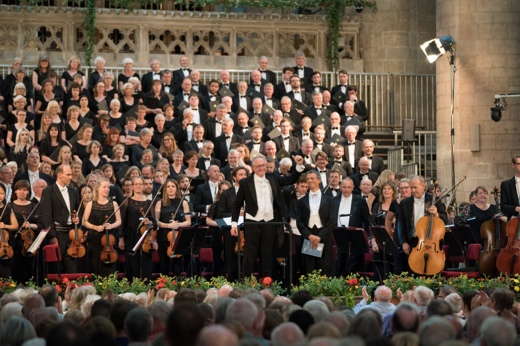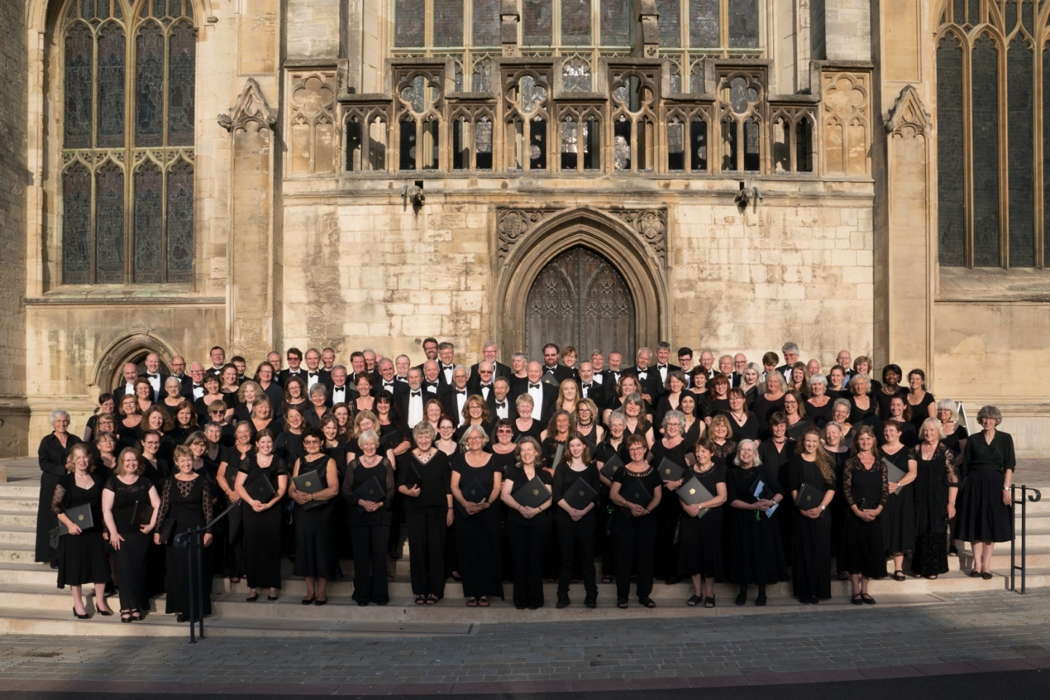- Prospero Classical
- Arizona Opera
- Bacarisse
- Ivo Vinco
- Manon
- Cajkovskij
- Konstantinos 'Dino' Yannopoulos
- Deutsche Oper Berlin
 RESOUNDING ECHOES: Beginning in 2022, Robert McCarney's occasional series features little-known twentieth century classical composers.
RESOUNDING ECHOES: Beginning in 2022, Robert McCarney's occasional series features little-known twentieth century classical composers.
ARTICLES BEING VIEWED NOW:
- Régine Crespin
- Hector Berlioz
- Ruth Railton
- Marián Varga
- Profile. A Very Positive Conductor - Paul Bodine talks to Los Angeles Opera's Music Director Designate, Domingo Hindoyan
PHOTOGRAPHER'S INSIGHT

MICHAEL WHITEFOOT,
Photographer at the Three Choirs Festival,
explains some of the tricks and pitfalls
of covering a major UK festival
As you look at the fifty-two galleries of images taken at the 2019 Gloucester Three Choirs Festival in the UK, spare a thought for the shoe leather and sixteen-hour days the photographer puts in so that the images are processed and available for the press office and concert reviewers to use at the end of each day. The planning starts as soon as the Festival programme is finalised, and I can see times and venues. Sometimes it's a walk and other times a car journey between venues and on the rare occasion when two events are at the same time, a decision must be made on which to photograph.
It all starts with a visit to each venue to see where I can position myself without being seen, or at the very least where I will not distract from the performance! Smaller venues are much easier than a Cathedral, as often I can stand at the back with everyone in front of me looking at the performers. However, the Gloucester (or indeed Hereford or Worcester) Cathedral is another matter altogether!

Michael Whitefoot in Hereford Cathedral.
Photo © 2018 Michael Whitefoot
Here are some images from venues where I could take photos from behind the audience last year.

St Mary de Lode Church in Gloucester. Photo © 2019 Michael Whitefoot

St Mary de Crypt Church in Gloucester. Photo © 2019 Michael Whitefoot

Gloucester Dance School. Photo © 2019 Michael Whitefoot
So, let me explain how I took some of the Cathedral photos used by concert reviewers who picked images to reflect their reviews. The Cathedral is jam-packed full of people sitting on chairs watching the performers on the platform, or via TV screens elsewhere, so in reality there were only five places to take photos from.

1 Photo taken from the choir screen behind the stage at Gloucester Cathedral. Photo © 2019 Michael Whitefoot

2 Photo taken from the left side of the stage. Photo © 2019 Michael Whitefoot

3 Photo taken from the centre of the tiered stand, at the back of Gloucester Cathedral. Photo © 2019 Michael Whitefoot

4 Photo taken from the left of the tiered stand, at the back of Gloucester Cathedral. Photo © 2019 Michael Whitefoot

5 Photo taken from the right of the tiered stand, at the back of Gloucester Cathedral. Photo © 2019 Michael Whitefoot
In Gloucester Cathedral I did not use any remote cameras as there was no position where they would not have been heard clicking. Therefore, I used my Sony mirrorless cameras, which are silent. This means I can take literally hundreds of photos during a concert and nobody hears a single click.
The biggest problem I sometimes face is not knowing the exact sequence of events during a concert. For example, how many soloists in each half, when precisely will they sing, are there any special guests like composers in the audience who will be acclaimed at the end of a concert, how long each half of the concert is going to be and will there be musicians performing off-stage somewhere. To photograph these moments during a concert requires me to be in exactly the right place at the right time, or to run from one end of the Cathedral to the other without causing a distraction.
Luckily Gloucester Cathedral has cloisters which run the length of the Cathedral, from behind the tiered stand to behind the stage, which I often used to get into a position to get the photo. This was an invaluable hidden space away from the audience.
What can go wrong? The Festival Chorus is very busy all week so the best time to photograph them is straight after the Opening Service when they are all onsite and in their concert clothing. However, this is the second year in a row where it rained heavily at the planned moment and the shoot was rescheduled. It was then rescheduled for the following Thursday when the weather was forecast to be good - but it meant the Chorus arriving forty-five minutes earlier than usual and me finding a way to get photos taken with no curious concert-goers drifting across the scene. Some traffic bollards and a loud voice overcame the situation, as you can see.

The whole 2019 Three Choirs Festival Chorus. Three more photo set-ups were taken of the individual Choral Society groups following this one. Photo © 2019 Michael Whitefoot
How many photos were taken during the Festival week you ask? The answer is 38,976 in total, which means that at around midnight on each night of concert week - after an often fourteen-hour day of continuous photo assignments - there are more than 4,500 images to process, select and crop, to reflect each venue and performance. Then at about 1am I upload them for the Festival marketing team's use and also send them via email to the concert reviewers to use online the next day. Why so many shots? You need hundreds of a conductor who's waving his hands and baton in front of his face, in order to achieve one where the eyes are open, and no hand or baton is in the way! Let alone singers, where you need to capture eyes up, and the most flattering facial expressions.
What kit was used to take the photos? Two Sony A9 bodies, a 400mm f2.8 lens (the big one) for long shots, 70-200mm f2.8 for group shots and the 28-70mm f2.8 for wide shots. (What does f2.8 mean? It means lenses which can take photos in low light of people moving quickly.) And a trolley bag to get it all from venue to venue.
This is my third Festival, so I have now covered all three Cathedrals and their local venues ... and I am looking forward to honing my procedures and camera settings to get even better photos at future Festivals!
Worcestershire UK

FURTHER ARTICLES ABOUT THE THREE CHOIRS FESTIVAL

